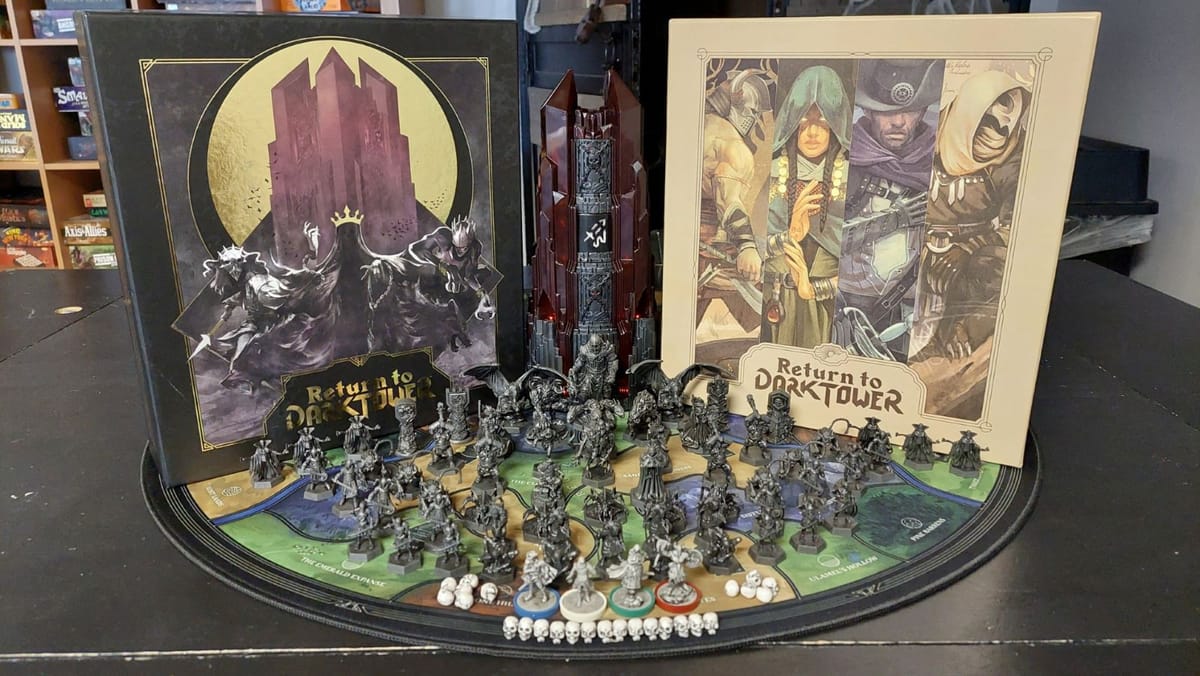
(An important note for this review, as I am but a young baby boy, I have absolutely zero nostalgia for the original.)
Yeah, I’m calling it now, Return to Dark Tower (RTDT) will be a significant event in the boardgame timeline. The original Dark Tower made waves during the height of the role-playing craze of the 80’s, and even had its own commercial starring Orson Welles! From what I’ve seen surfing the webs, nostalgia for Dark Tower thrives to this day, and RTDT’s existence stands as a testament to Dark Towers cultural reverberations. I believe RTDT’s social seismic activity will match or even surpass its predecessor.
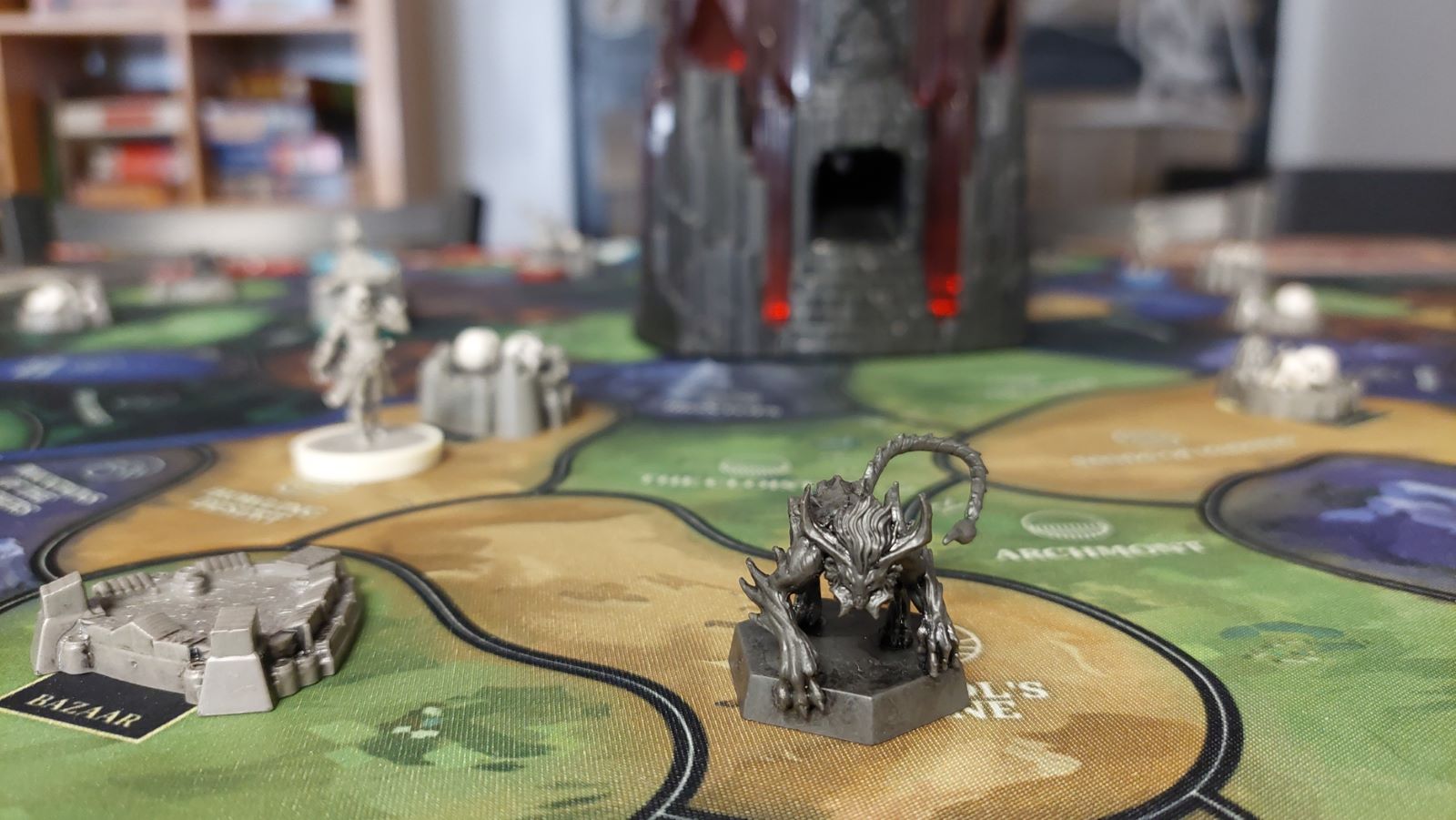
“What even is RTDT?” you ask? Well, sit down kiddo, let me tell you a story. An evil sorcerer named Azkol once constructed a luxurious tower at the heart of the four kingdoms. As his power grew, so too did his dark influence obfuscate the land. Fearing for their very way of life, each kingdom sent their chosen hero to brave the tower. Together, after much fraught and peril, the four heroes defeated Azkol and restored peace to the realm.
In the aftermath, the issue of what to do with the tower sparked much debate. Due to the central location, some proposed to destroy the tower and establish a trading hub instead. Other’s suggested they take up residence themselves. But alas, the real estate was just too valuable. The four kingdoms agreed to lease the tower and split the ownership.
Several years passed as the four kingdoms raked in that sweet lordship dough. But a new tenant has taken up residence, and they’re not paying rent! Even worse, they’re dropping their garbage everywhere. Now the four kingdoms must embark their heroes once more to evict the fiend from their precious tower!
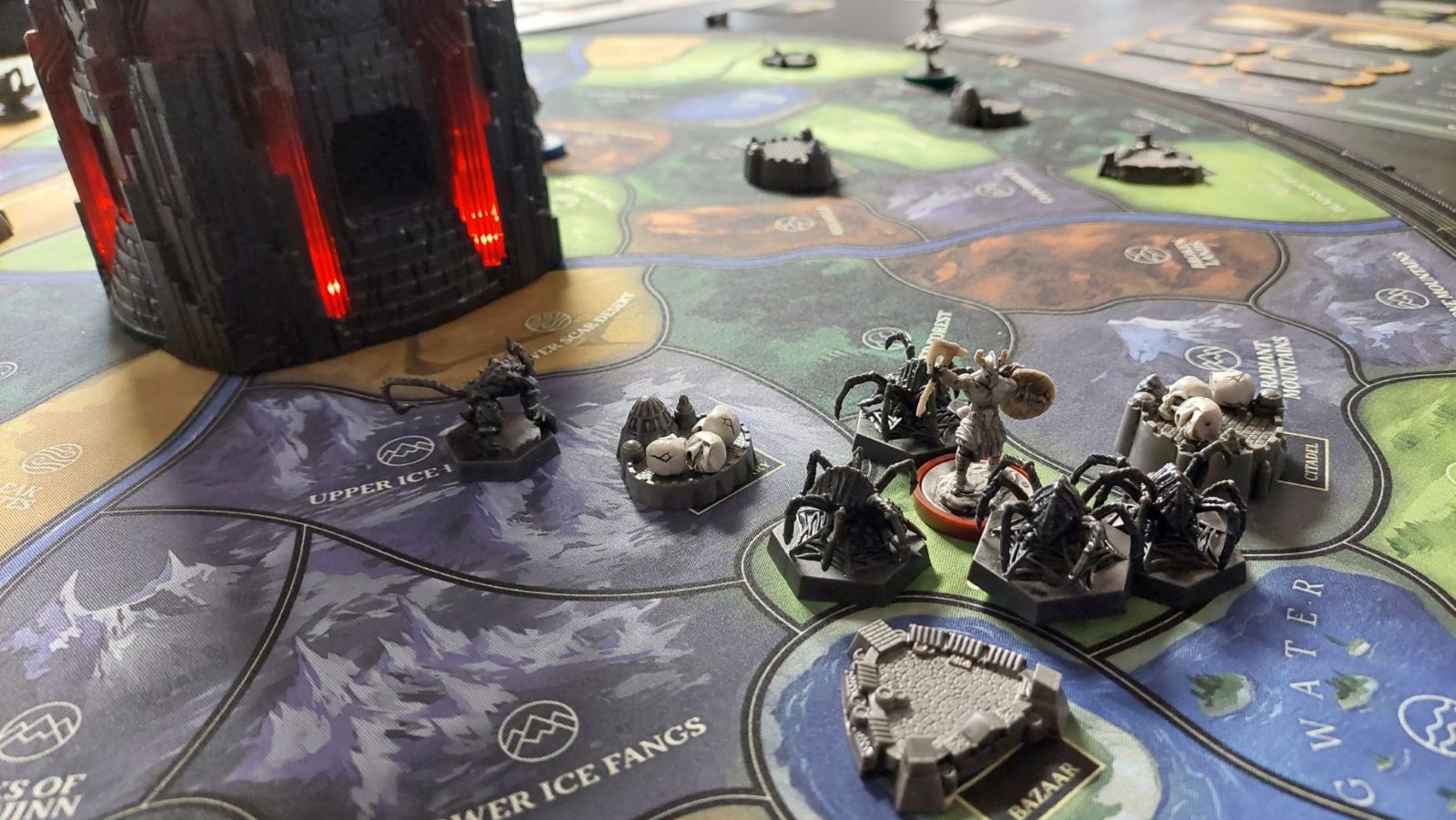
Production
This time I am starting with production! It’s the first thing you’ll see in this review because RTDT is the first thing you’ll see. Whether in its box or out on the table, if RTDT exists in the same space as you, you’re going to notice it. The massive box is gorgeous and the table presence towers above any other. I feel confident in saying no ginormous three hour long tabletop game has ever enticed people outside the hobby with such ease. This tartarean spire beguils and intimidates all, just my type. Even better, the neoprene mat and Dark Hoard expansion turns this beast into a monster. No one can resist its stygian charm. Add good lighting and a bluetooth speaker, and RTDT becomes not a game, but an experience.
I have only one tiny complaint regarding production. Batteries! The tower runs on three AA batteries, and each set lasts 2-3 games. Bah! What is this, 1981! Oh well, the tower has only jammed on me once, was super easy to fix, and I have yet to encounter a bug on the app. The art and aesthetics are perfection. The miniatures boast immaculate detail and the ice troll even has nipples! If I were to end this review right now and rate RTDT on production alone I would give the base game 95/100 points and the full package 100/100 nipples. This is where we are starting this review y’all, we are discussing the new king of cool… the… battery powered, king of cool.
(eraser tip for reference)
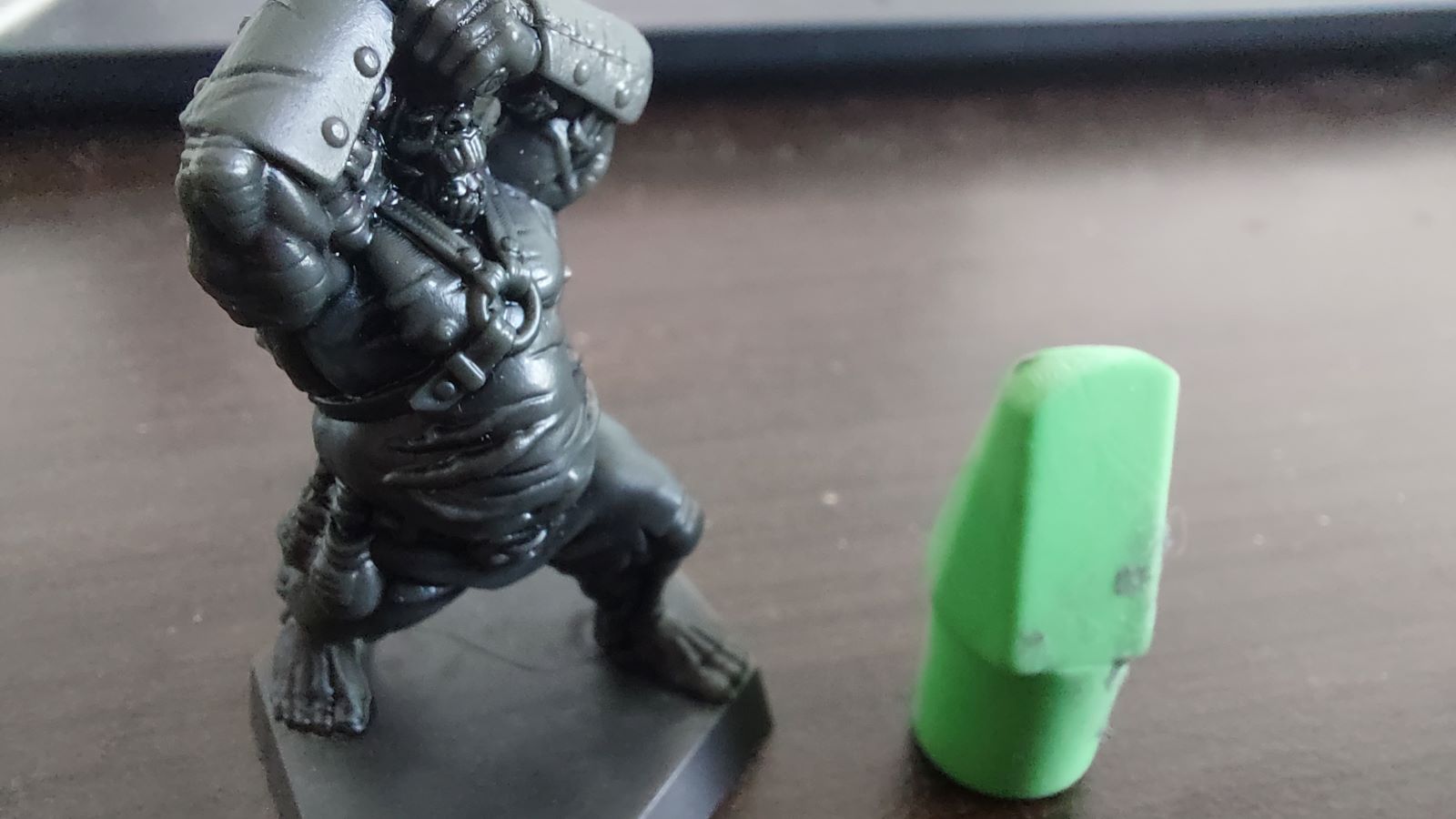
Setup
Like a true plutocrat, you’ll have your shiny new tower up and running in no time. All you need is a massive table and some good ole free labor. Where to get free labor you ask? Well, thanks to intuitive design, “employing” your friends has never been easier! Speaking of free labor, the app helps run part of the setup and gameplay, you hardly have to lift a finger! Despite being a total table hog, setup should take no longer than 10-15 minutes.
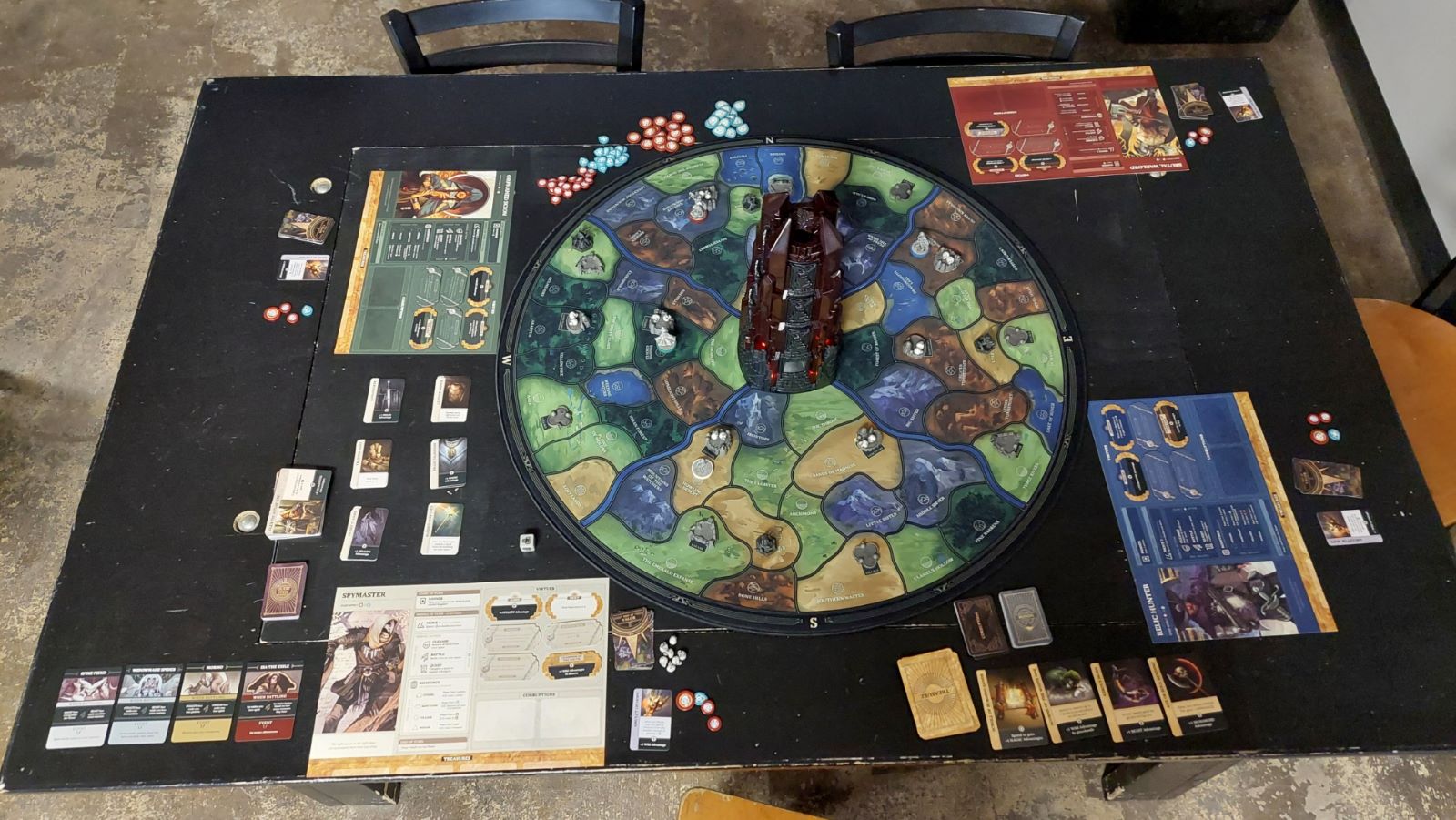
RTDT has a recommended adversary and main goal for first plays, which I condone, for reasons I’ll illustrate later. If you think I sound like a dumb dumb, or you’re just a rebel, you can choose between nine main goals, eight adversaries, and four foes for each of the three foe levels.
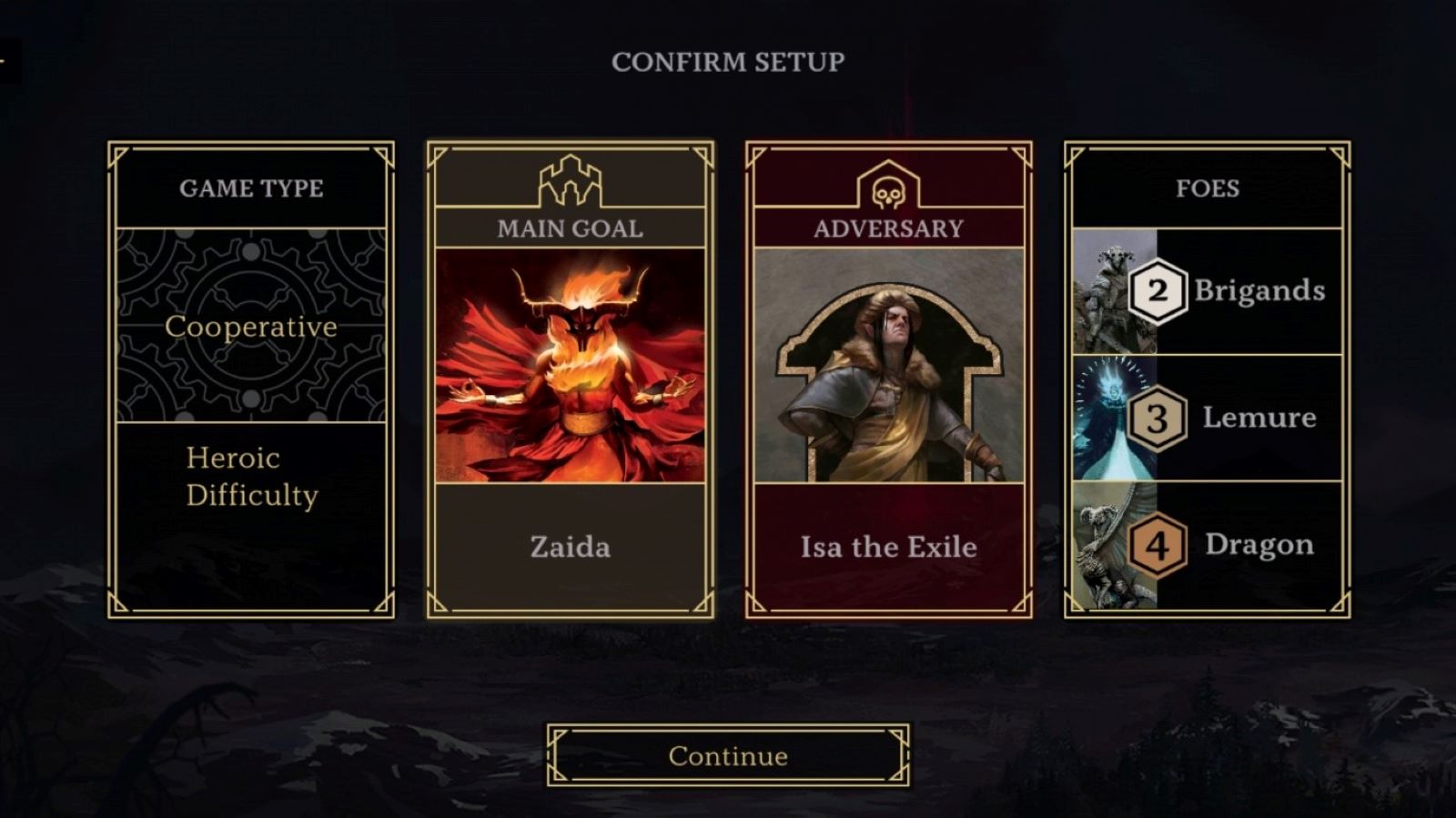
Gameplay
Don’t let the tower’s intimidating aura scare off your friends. RTDT is a much simpler game compared to others of similar size. Anyone who has played a boardgame before can learn RTDT. A full game consists of at most six “Months” or rounds, with each round containing eight to ten total turns, less so as player count decreases. Play rotates clockwise, with each turn consisting of three phases. Each game features a main goal, which, upon completion, draws the adversary (main bad guy) out of the tower. Upon defeating the adversary, the players win! If the players fail to do so by the end of the sixth month, or trigger one of the other two lose conditions, I’ll explain more later, they lose.
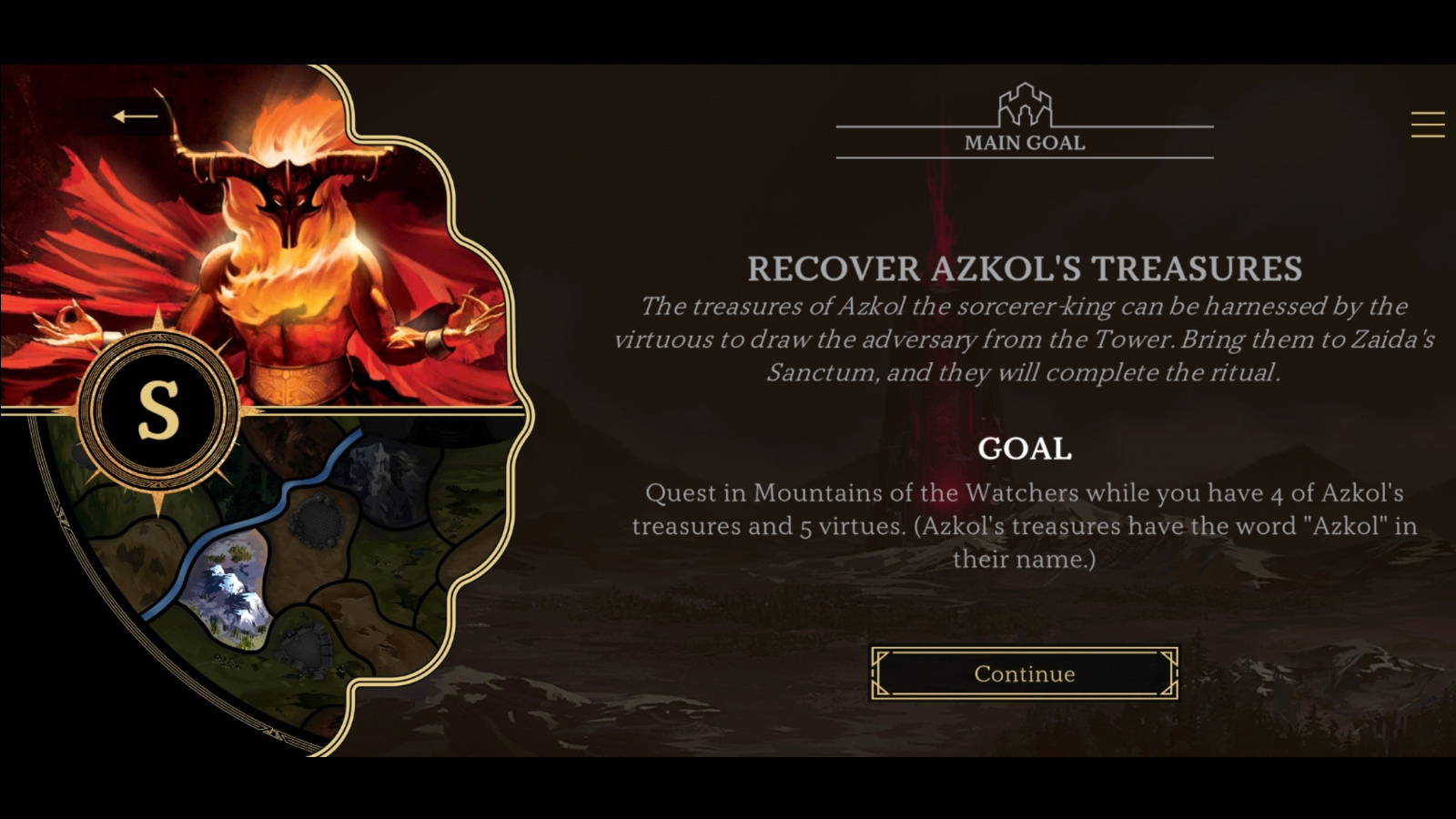
Beginning
Before doing anything else, the player must decide whether or not to take their banner action. The only reason not to involves glyphs, so let’s talk about them here. The tower has three seals on each of the four sides. Throughout the game, seals will be removed, exposing either a hole for skulls to tumble out or a symbol matching one of the player actions. These symbols are called glyphs. When a glyph is exposed and facing a kingdom, that player must pay one spirit to take that action. If the banner glyph is facing someone’s kingdom, that player may not have the spirit to take their banner action or they may want to keep their spirit.
Middle
After deciding whether to take their banner action or not, players have movement and two types of actions to take. Anything in the middle section of a turn can be done in any order and the movement can even be split between actions. Much too easy to forget, movement may be doubled that turn, at the cost of one spirit, but only before any movement has been made.
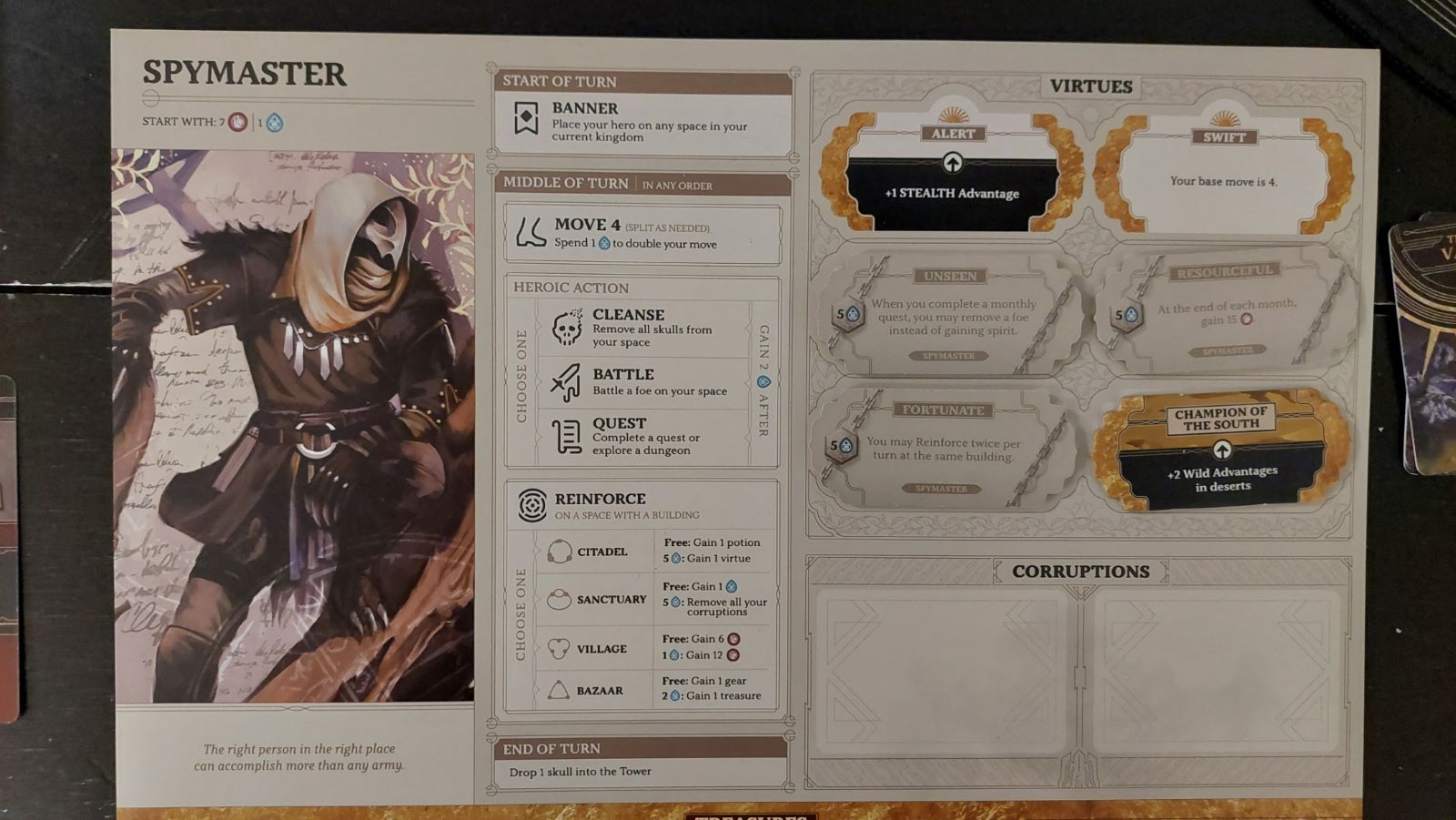
One of two actions available is the heroic action, of which there are three types: Cleanse, Battle, and Quest. Cleansing removes skulls from the building at the player’s location. Each building can hold three skulls; when a building receives its fourth, it is destroyed, afflicting the player reigning over that kingdom with a corruption card. When any player receives their third corruption, everyone loses. Additionally, whenever a skull must be placed or dropped into the tower and no skulls are left in the supply, everyone loses.
Battling involves fighting foes. Each game contains one level 2, 3, and 4 foe and an adversary. A foe’s level indicates how many battle cards must be faced to defeat them; the adversary counts as level 5. Battle cards determine losses the battling player must pay, and anytime a player must lose something they do not have, they must take a corruption. Each enemy has two attributes, such as magic and beast, which determines the types of applicable advantages. Advantages are spent to reduce punishments on battle cards, and sometimes turn them into bonuses!
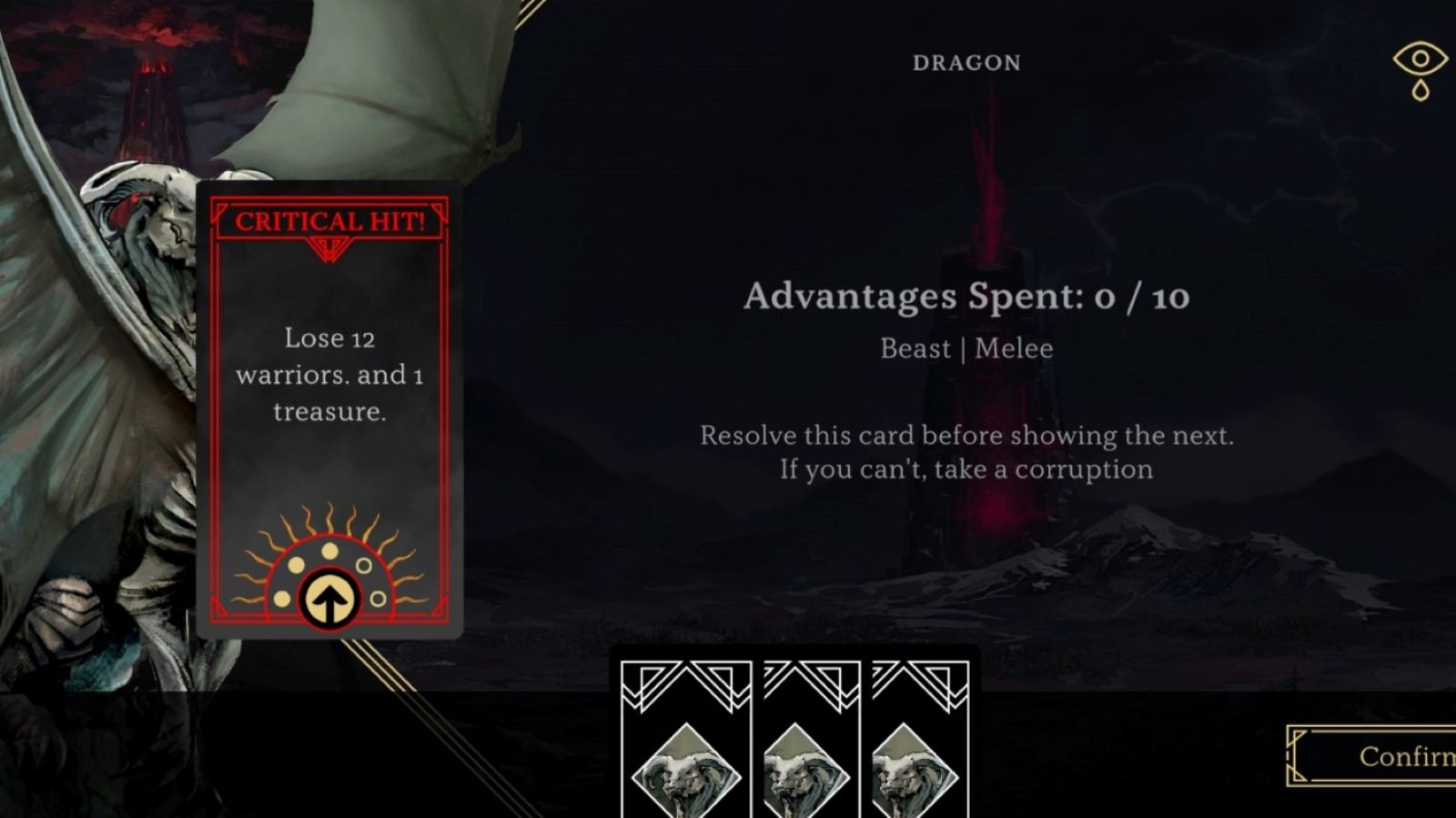
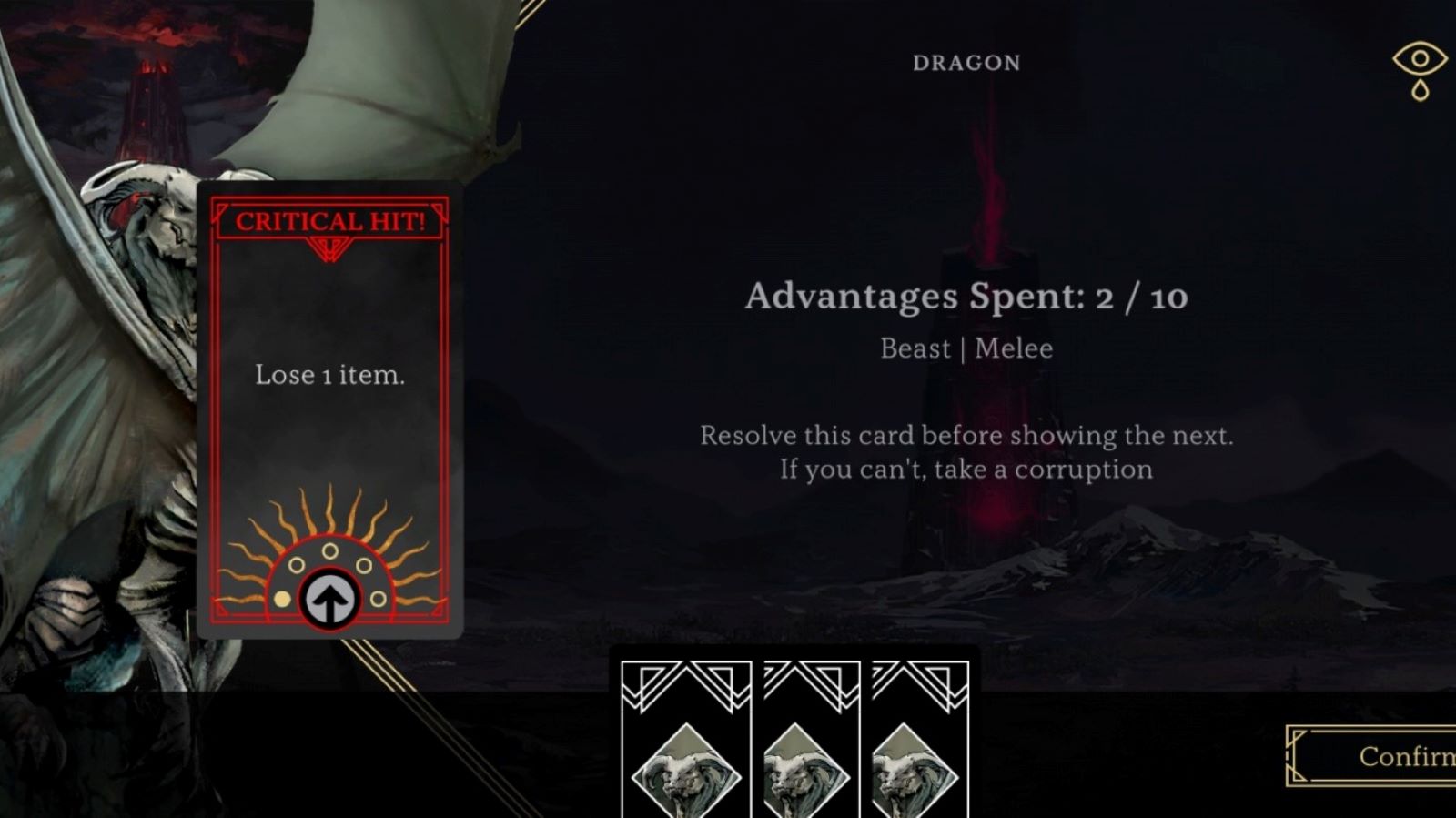
Questing is used to complete quests and delve dungeons. Dungeons have several rooms to explore with one final room granting success upon discovery. Each room has a small consequence to pay, which can each be reduced or turned into a small bonus by a single advantage. Upon completion of any heroic action, that player receives two spirit.
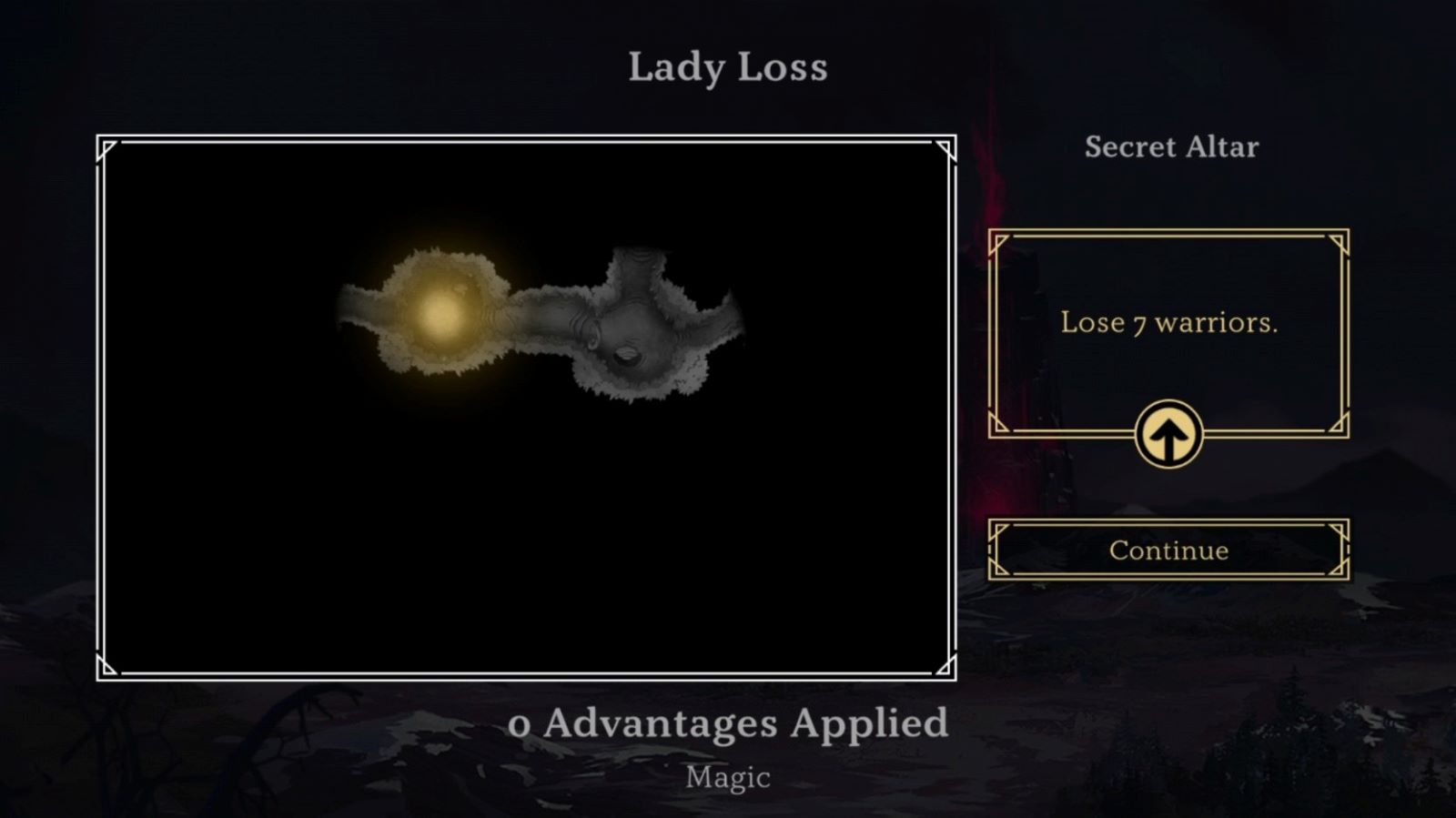
The second type of action in the middle turn is reinforcing. The active player may reinforce at any of the four building types, and reap rewards depending on the type. The citadel is used to gain potions or unlock player upgrades called virtues. The bazaar is used to gain gear or treasures. The village is used to gain warriors, and the sanctuary gives spirit or removes corruptions.
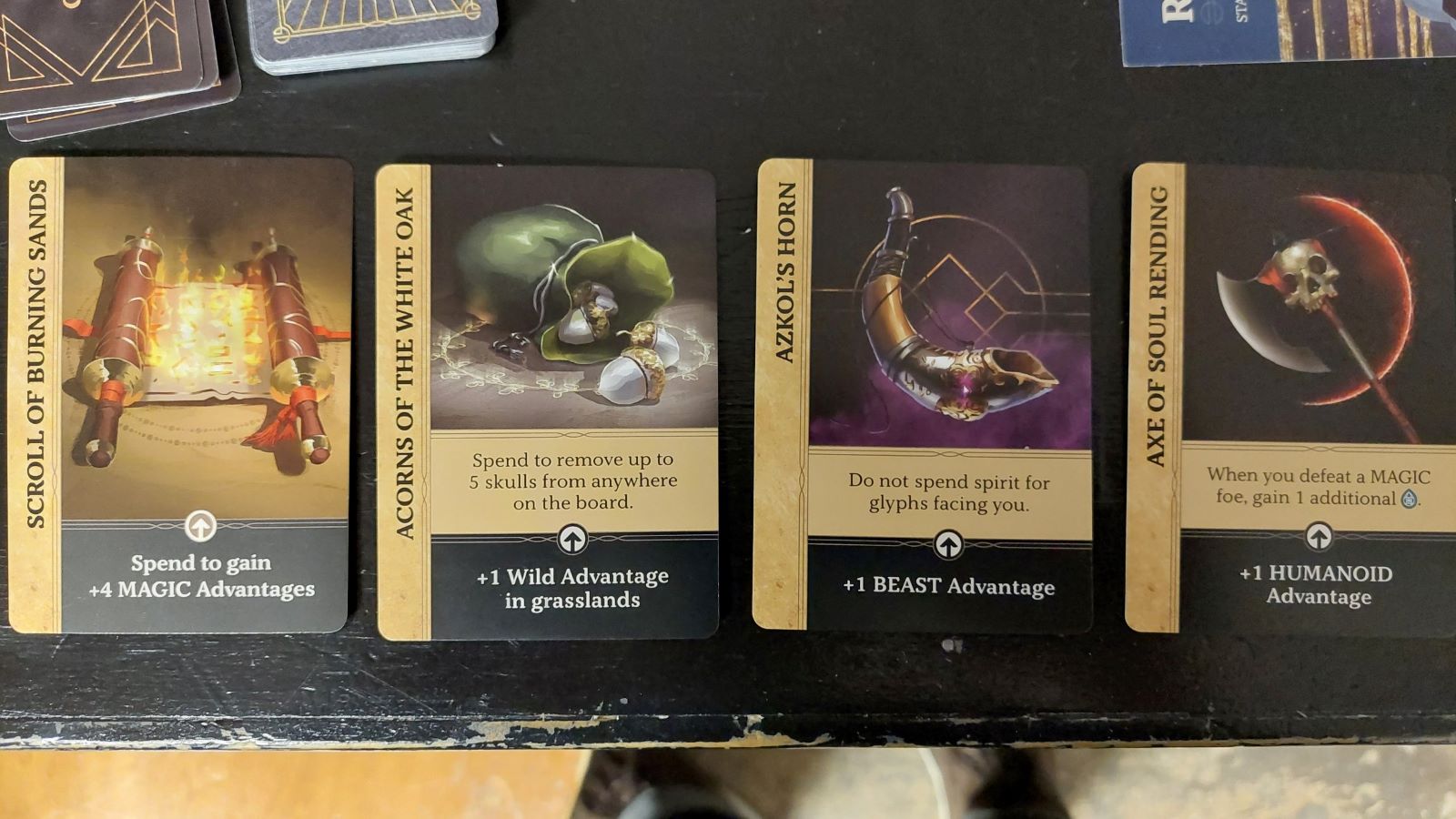
End
Drop a skull into the tower! The tower will recognize the skull and signal the app to resolve an event phase before initiating the next turn. Several events can take place in between turns, such as foes spawning and/or attacking, the tower rotating, seals coming off, or companions granting gifts.
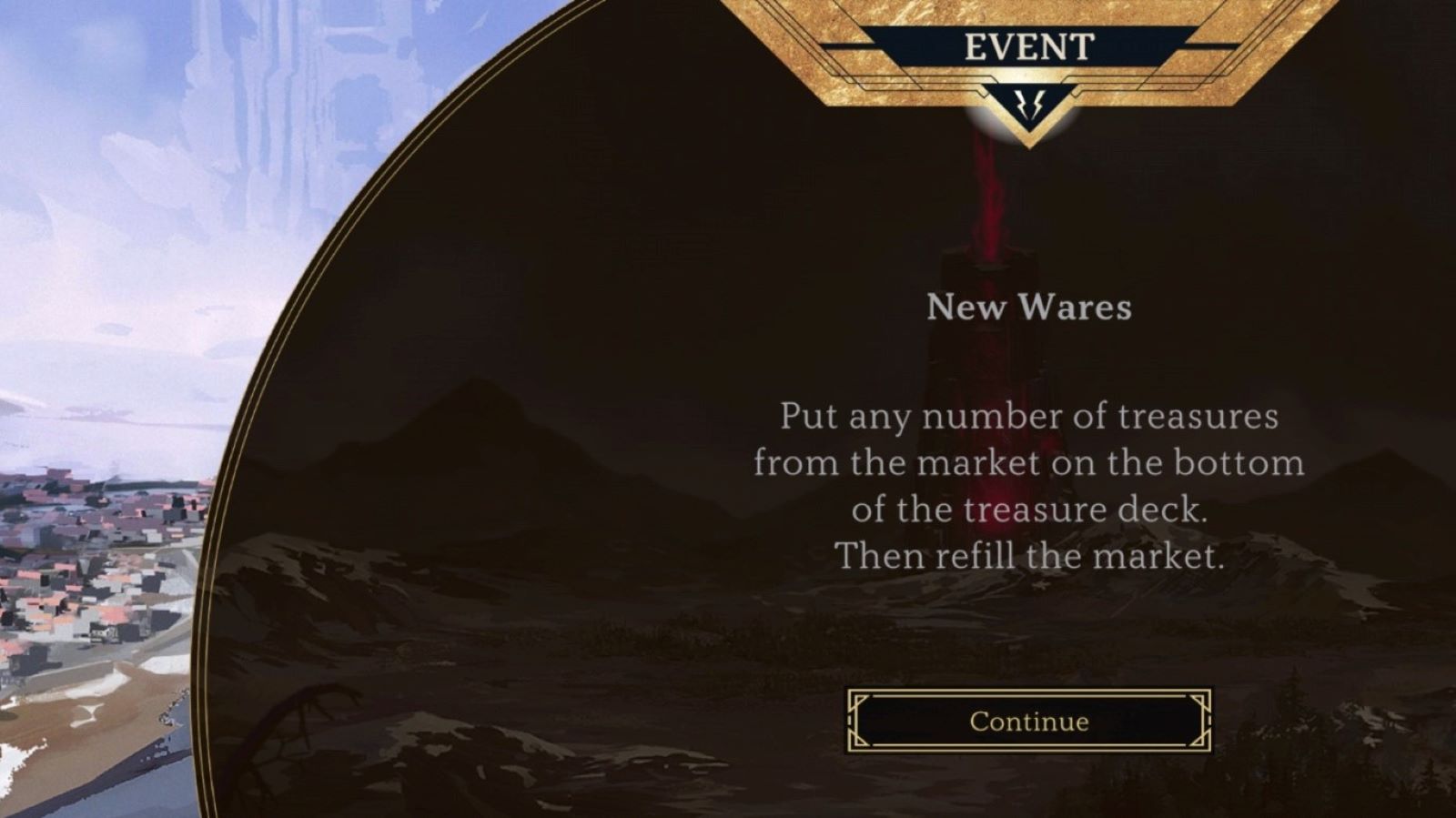
After the first month, each month will have a companion quest and adversary quest. Companion quests grant a companion to the completer, while completing adversary quests prevents some sort of bad thing from happening, depending on the adversary.
Thoughts
My issues with this game revolve around one subject, difficulty. While probing the depths of RTDT’s BGG forums, I’ve found some consensus regarding the relation between player count and difficulty. As player count increases, difficulty does as well, significantly, and my experience supports this theory. The harder difficulty alternative is required to make single player a challenge, but even at the base difficulty, four player games are frustratingly hard.
Now, I love a good challenge. I’ve played and enjoyed every Fromsoft game since Dark Souls. Even so, four players is too hard. In single player, the one character has 6 turns every month to level up and amass gear, treasures, and potions. Also, foes spawning in dormant kingdoms can effectively be ignored. But with four players, each player only has two maybe three turns a month, and every skull, every foe, matters. With so few turns to gain advantages, fighting costs extra resources, which means more turns must be spent buying warriors or cleansing corruption. But if players only focus on getting stronger and neglect fighting foes, they’ll get stronger as well. If things get too far out of hand, a player may receive three corruptions before their next turn. Choosing what to prioritize should not equate choosing what to neglect.
But wait there’s more! Knowing when to fight can only be learned through experience, and underestimating a single powerful foe can easily throw the entire game. Further, the information needed to know how to dodge foe events is tucked away and very easy to miss. This leads to my biggest gripe with RTDT’s gameplay. RTDT outshines any other large game in terms of attracting new players, then proceeds to ruthlessly punish them for their ignorance. I want difficulty, I want the tower to maintain the pressure of its doom, but I also want players to have a chance. Losing the first time is fine, but after new players lose a second time, then a third, it starts to feel unfair. This is less of an issue with three players, but I want ideal difficulty no matter how many players.
There are some methods to combat the difficulty at four players and I highly recommend you use them. Click the bottom right button on the app to enter the “check foe status” page, then click on each button titled “View current foe event.” This will tell you what each foe will do if they attack between turns. Knowing how to dodge foe events will make your life so much easier. In addition, during setup, try to match foe and companion types to the adversary. For example, if the adversary is melee, select all melee foes and a main goal featuring a melee companion. These tips should help a bit, but hopefully won’t be necessary in the future as these balance issues can easily be fixed by changes to the app.
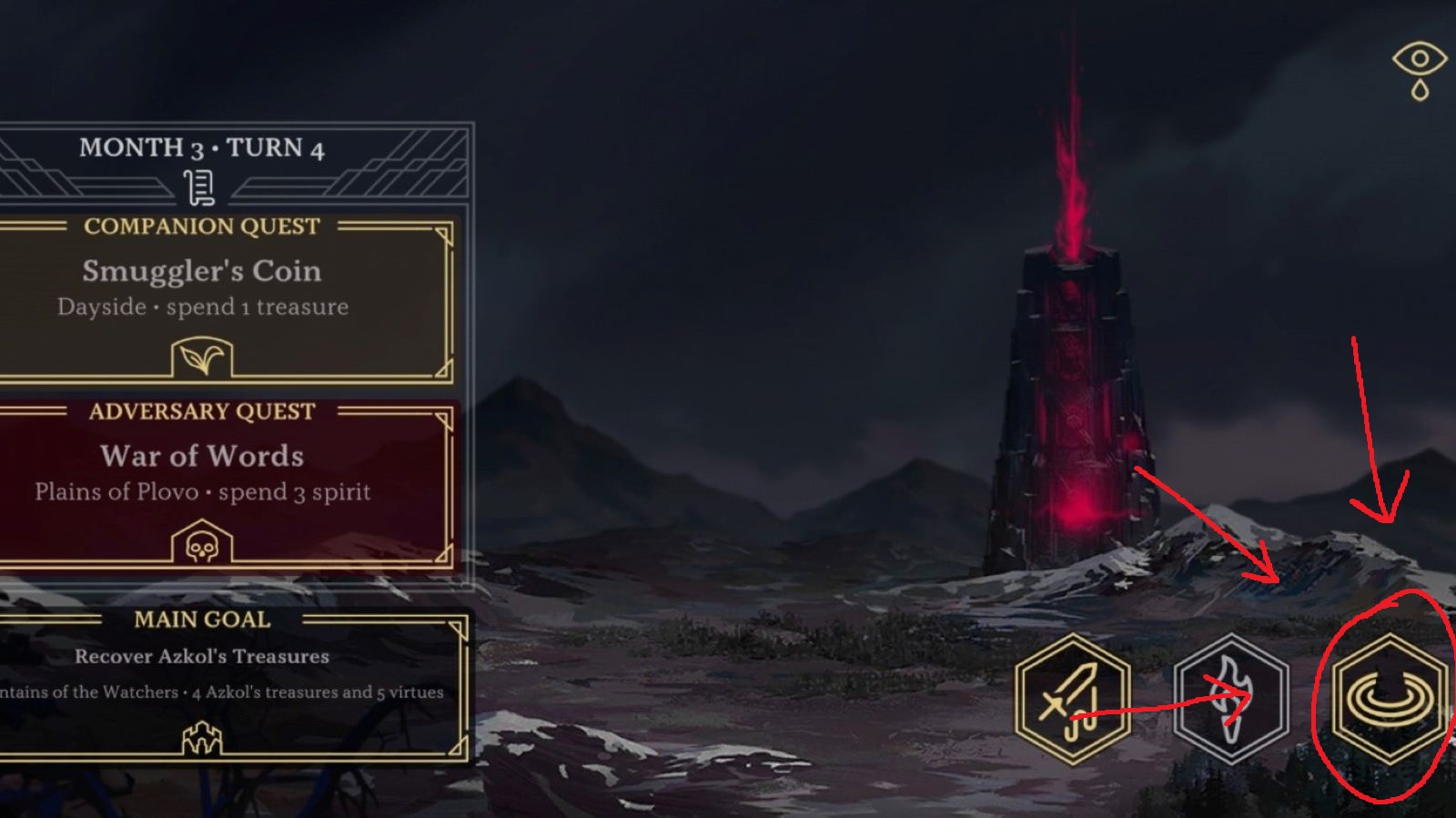
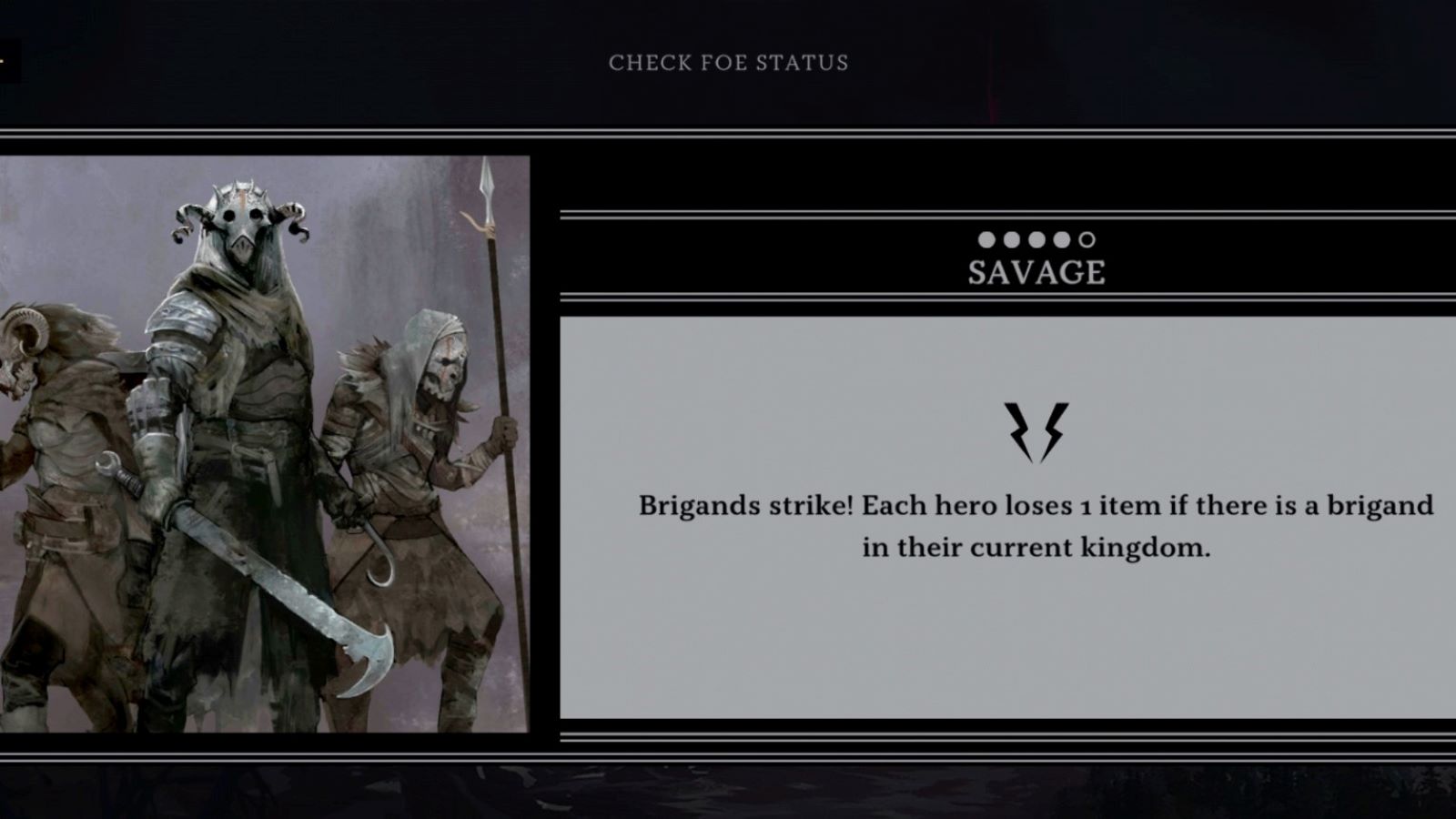
Return to Dark Tower
Excellent
Return to Dark Tower might just be one of the most aesthetically pleasing boardgames ever made, and it sports solid gameplay to boot. Much like its predecessor, Return to Dark Tower will leave a lasting impression in anyone lucky enough to experience it, and I’ll be using my copy to actuate nerds for years to come. Just base game score: 90
Pros
- Aesthetic masterpiece
- Solid Gameplay
- High replay value
Cons
- Minor balance issues
- Expensive
- Batteries
